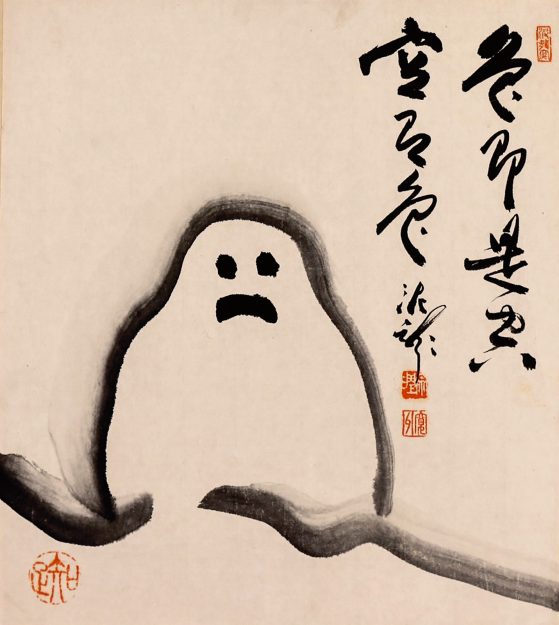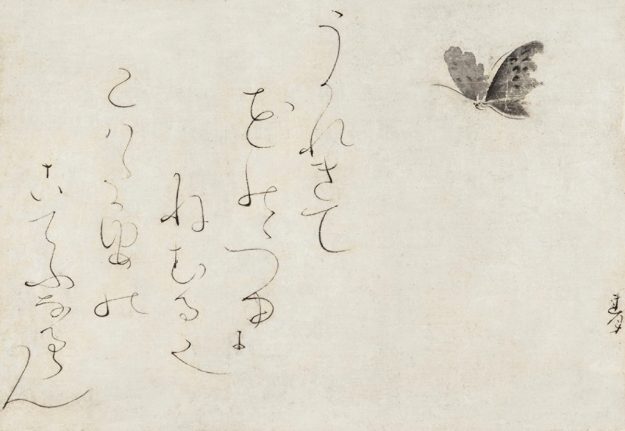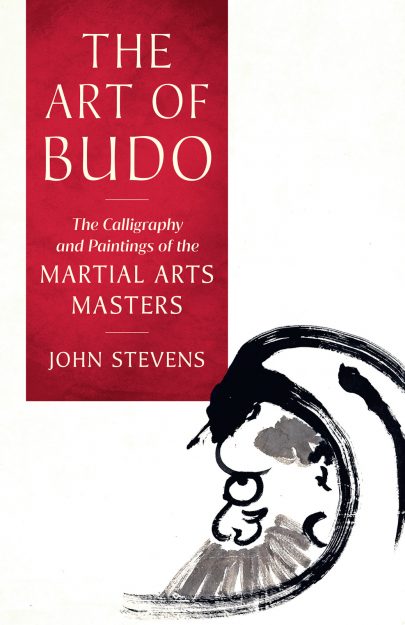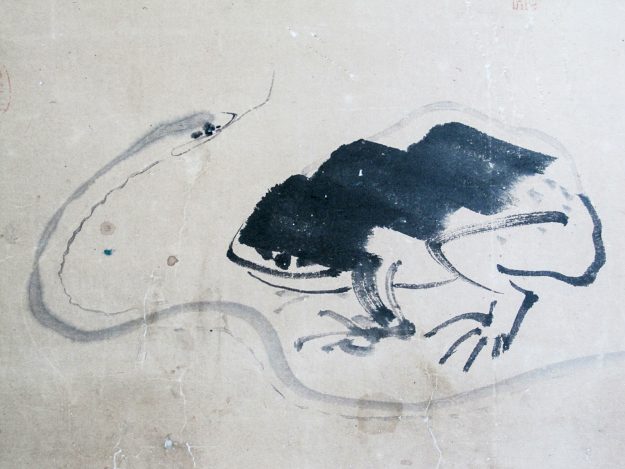In East Asian culture, brushwork is considered a “mind seal”—a single stroke can reveal what is in a person’s heart. It can also express the essence of a master’s teaching. Since it is not the formation of the characters but the spirit behind the composition that matters, few of the most esteemed examples of brushwork were by professionals—and many masterpieces were by martial artists. In fact, Wang Xizhi, venerated as the greatest calligrapher in Chinese history, was a Tang dynasty general.
This collection focuses on the brushwork of the budo (“way of martial arts” or “martial way”) masters of Japan. What defines a budo master? It refers to one who is well accomplished in all the technical aspects of the martial arts and, more importantly, the strategy behind warriorship. Strategy involves the ability to correctly evaluate an opponent’s strengths and weaknesses, both material and psychological. However, one can qualify as a budo master even if one has never stepped on a battlefield. Although some budo masters refused to wield weapons (as part of their Buddhist vows), they were as skilled as the best martial artists. While many budo masters were heavily influenced by Zen Buddhism, others were not—they drew on their experiences with esoteric Buddhism, Shinto, Confucianism, Daoism, folk religion, and other traditions. Like Zen, the most effective budo teachings are short and to the point. Due to the compact medium—a single sheet of paper—the essence of a master’s teaching is limited to a few characters; typically a one- or two-line phrase or often only a single “one-word barrier.” Many budo masters painted as well. Although a few were excellent artists, the majority of their paintings are simply composed, and some are more like cartoons, often graced by a laugh-out-loud humor.
This is not an art history survey; it is a meditation manual. The illustrations are to be contemplated, not analyzed. It is an encounter between the viewer and the viewed. Everyone sees the artwork from a different perspective. The captions are “hints”; the interpretations are up to the reader.

Zen Snowman
Form is Emptiness, Emptiness is Form!
–Deiryu
Paintings of a yukidaruma, or “snow Daruma,” are a common theme in Zen art (Daruma being the Japanese rendition of Bodhidharma, the Indian monk credited with transmitting Buddhism to China and rumored to have founded Shaolin Kung Fu). They are usually accompanied by an inscription of the most famous line of the Heart Sutra. The snowman materializes—in the depth of winter, it is as solid as can be—but when the weather begins to warm up, the snowman gradually melts away. The reality of “form is emptiness, emptiness is form” can actually be seen in the appearance and disappearance of the snowman in a single, short season. This Zen snowman has a rather alarmed expression—he realizes that he is beginning to melt.
As a young monk, Izawa Deiryu (1895–1954) was a student and attendant of Nantenbo (see page 70), who once accused him of copying his work and selling it. Deiryu replied, “Why would I do that? My brushwork is much better than yours!” Later serving as the abbot of Enpuku-ji, he was a master of numerous arts—calligraphy, painting, kendo (a form of swordsmanship), and kyudo (a form of archery).
 Zazen Oni
Zazen Oni
Let go of
Everything
You don’t have,
Forget everything you don’t know,
And just be like this [= Buddha]!–Inscription by Motsugai
Even demons (oni) can be transformed through Zen meditation; an oni’s bravery and fearlessness can make its enlightenment more powerful and effective. Oni are known for wielding iron rods to beat evildoers as they fall into hell, but this oni has placed its rod on the ground in front of it; it no longer needs it. The inscription is a koan—“How is it possible to give up what we don’t have and forget what we don’t know?”—to be pondered single-mindedly and intently like the fiercest demon.
Takeda Motsugai (1795–1867) became a Soto Zen novice at age 5 and became a martial arts master famed for his prodigious strength, nicknamed “Demon.” Yet his zenga (“Zen artwork”) have a light, humorous touch, displaying a wonderful sense of joy and freedom—not all hard-edged and grim, as we might expect from a demon.
 Staff
Staff
Speak and you get the Nanten staff;
do not speak and you get the Nanten
BO! (Staff )–[signed] Seventy-plus-four-year-old fellow Nantenbo Toju
The staff in the middle serves as both a painting of Nantenbo’s staff and the last character of the inscription. The calligraphy on both sides of the painting form little staffs. He is telling us, “The essence of Zen transcends speaking and nonspeaking; clever words or mere silence will not cut it. Unless you really demonstrate Zen to me, you will feel a good whack of my staff.”
Nakahara Nantenbo (1833–1912) carried his trademark staff wherever he went and applied it liberally to “wake up” his students.

Butterfly
Sporting and sleeping
Amidst the dew in
A field of flowers—
In whose dream
Is this butterfly?–Rengetsu
This refers to the famous dream of Chuang-tzu: “Am I a man dreaming of a butterfly or a butterfly dreaming I am a man?” There are several other meanings. In Japan, it is believed that at the time of a person’s death, a butterfly will appear to relatives, friends, and students who are close to the deceased, as a kind of farewell. Rengetsu’s signature is to the side, as if she is enjoying the butterfly and the calligraphy dancing about. The work is animated with no sense of a pause or a break in composition or concentration.
During her teen years, Otagaki Rengetsu (1791–1875) was raised a samurai lady in Kameoka Castle, well instructed in both the fine and martial arts. She was famed for her beauty and married young, but she eventually lost two husbands and all her children to illness. She became a Buddhist nun at age 33 and thereafter devoted her life to spiritual pursuits: meditation, charity, and art—poetry, calligraphy, painting, and pottery.

Mount Fuji
Good when clear, good even when cloudy—Fuji mountain’s original form never changes.
–Koho
Life is full of changes, alternating between sunny and dark days, but our innate buddhanature, pure and majestic, remains undisturbed. Tesshu’s Fuji, the simplest painting possible, is formed by three lush brushstrokes. It is a masterpiece of minimalist Zen art, and the rhythmic flow of the calligraphic inscription is outstanding.
Yamaoka Tesshu (1836–1888) was a demon swordsman and an elite soldier. However, when he was defeated by the much smaller and older Asari Gimei, Tesshu realized that it was the mind, not the body, that determined the outcome. Studying Zen with the master Tekisui, he experienced a great awakening at the age of 45 and founded the Muto Ryu (“No-Sword School”) to promote his ideas of the sword and Zen as one.
Killer Frog
The two square off for a fight to the death
The one who is not rash,
Who takes a breath [has the right timing] will win—
In the evening cool.
The painting is by Sengai Gibon (1750–1837), but the accompanying inscription is by an unknown calligrapher. Usually this type of encounter—which often takes place in the evening—ends badly for the frog, but this time my money is on the amphibian. The thin, timid-looking snake appears woefully overmatched. The frog is in a sumo stance (tachi-ai); in sumo, timing is key to victory. Sengai’s Zen frogs are typically whimsical creatures, but this killer frog is fierce.
♦

From The Art of Budo: The Calligraphy and Paintings of the Martial Arts Masters by John Stevens © 2022. Reprinted in arrangement with Shambhala Publications, Inc., Boulder, CO.
